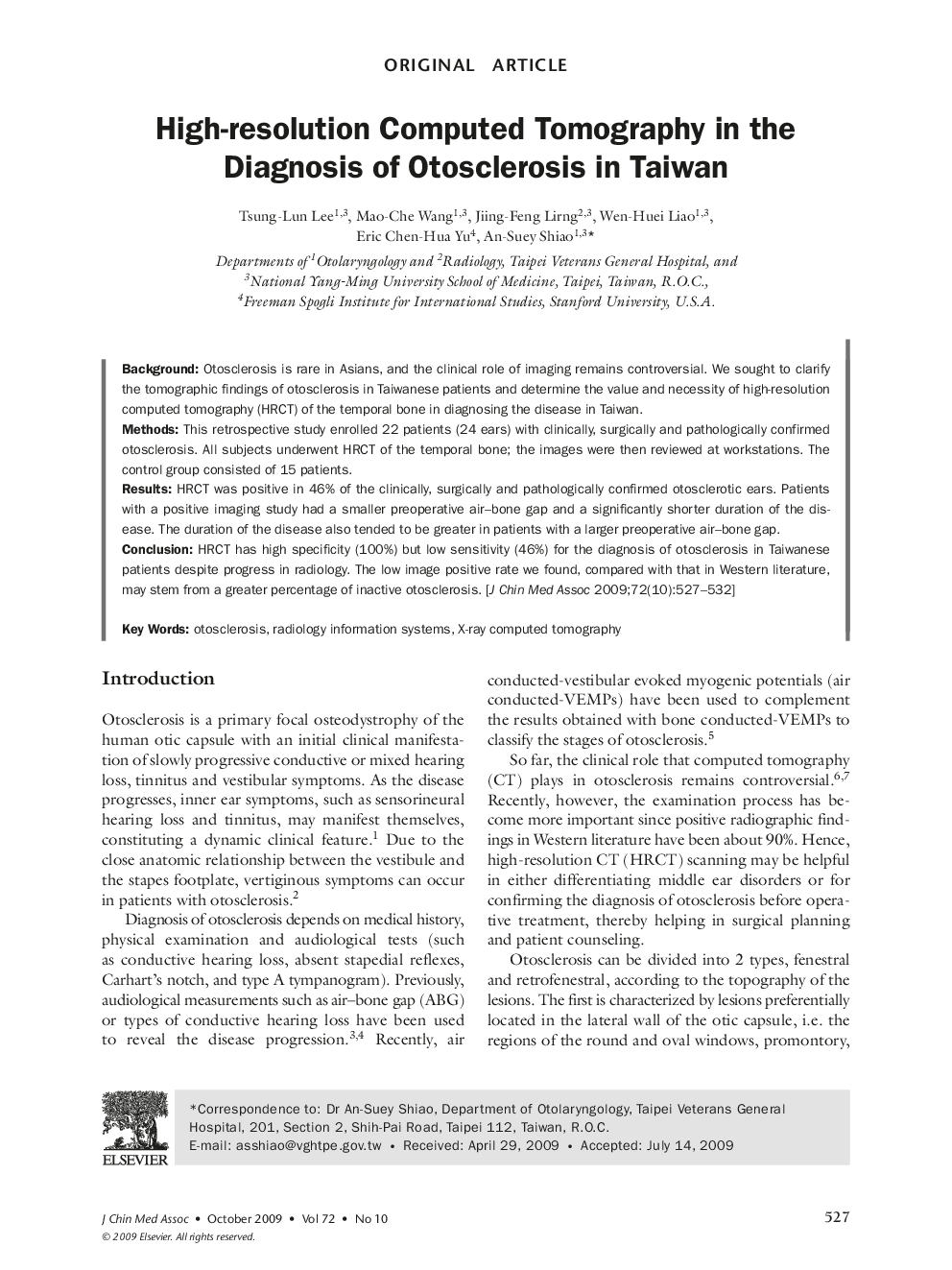| Article ID | Journal | Published Year | Pages | File Type |
|---|---|---|---|---|
| 3476760 | Journal of the Chinese Medical Association | 2009 | 6 Pages |
BackgroundOtosclerosis is rare in Asians, and the clinical role of imaging remains controversial. We sought to clarify the tomographic findings of otosclerosis in Taiwanese patients and determine the value and necessity of high-resolution computed tomography (HRCT) of the temporal bone in diagnosing the disease in Taiwan.MethodsThis retrospective study enrolled 22 patients (24 ears) with clinically, surgically and pathologically confirmed otosclerosis. All subjects underwent HRCT of the temporal bone; the images were then reviewed at workstations. The control group consisted of 15 patients.ResultsHRCT was positive in 46% of the clinically, surgically and pathologically confirmed otosclerotic ears. Patients with a positive imaging study had a smaller preoperative air–bone gap and a significantly shorter duration of the disease. The duration of the disease also tended to be greater in patients with a larger preoperative air–bone gap.ConclusionHRCT has high specificity (100%) but low sensitivity (46%) for the diagnosis of otosclerosis in Taiwanese patients despite progress in radiology. The low image positive rate we found, compared with that in Western literature, may stem from a greater percentage of inactive otosclerosis. [J Chin Med Assoc 2009;72(10):527–532]
